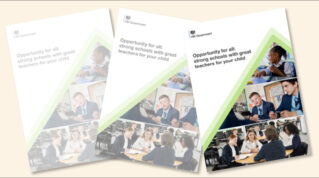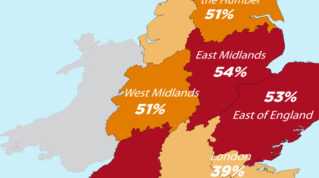Now that the dust has settled on the release of the schools white paper, there has been time to reflect and consider it in the round. White papers set out legislative intent, and Opportunity For All is clear that it is “the start of a journey” whose exact details have yet to be charted; but in many ways, that is both its opportunity and its conundrum.
The paper is unashamedly aimed at parents and linked to the levelling-up agenda. While it states intent to share evidence and enable collaboration, it remains to be seen how much the process will be done with, or to, the profession; that is perhaps the initiative to be grasped.
Within its many pledges and promises, there is much that schools can already point to as current practice: the length of the school week, rich and rounded provision, extra support for those who need it, focus on research-informed practice. Many of these have been developed for years, so some may see that as a seal of approval, but others will wonder why such established good practice needed legislation. We can only hope that doing so doesn’t represent an inclination to legislate for how, rather than whether, these things are done.
Similarly, nobody in the profession would deny the importance of high levels of attendance and strong behaviour, especially post-pandemic. But it is unclear how collection and manipulation of data will lead to ‘game-changing’ improvements if resources and capacity don’t swiftly follow.
Perhaps the greatest opportunity is in the regulatory review and the clarification of roles in a trust-led system. The systemic structuring is no surprise; it is the culmination of a decision taken a number of governments ago and at least gives an end date to our current fragmented system. Here, it will be the how, rather than the what, that matters.
LA schools are left with more questions than answers
As a strong and ambitious maintained LA school, we are left with more questions than answers. Sited in a potential education improvement area, will we be subject to direction suggested by the expansion of existing trusts into the area? Will we be encouraged to start our own trust, but in doing so have to meet the designated optimum number of ten? Or will remaining an LA school present only two choices: be assimilated into an existing larger trust, or join an LA trust?
The latter are an interesting ideological departure, but not without complications. How will LAs’ new MAT stakeholder role be balanced against their existing responsibilities to provide challenge and support for vulnerable students, or co-ordinate admissions? LAs often wrestle to hold MATs to account, and this reform could make that even harder.
Furthermore, while there is a willingness to support trusts of church schools, in rural areas these are often spread geographically in ways that belie community; for genuine community leadership, blended trusts must surely be a consideration. The paper states that “the priority in making these decisions will always be what is right for the children, parents and communities they serve”, but to what extent will stakeholders be able to exercise their voice?
Our system has been overly and punitively measured and fragmented by competition, often at the expense of our most vulnerable young people. One of the paper’s most powerful and positive levers is an expectation that all trusts and LAs will model civic leadership and collaborate on school improvement and systemic aspects, such as admissions and attendance. This has the potential, if aligned intelligently with other regulatory levers, to be a significant force for good. But it is a big ‘if’.
There is a promise to engage with the sector to shape the detail, but all parties’ feet must be held to the fire on this: there must be genuine engagement with and from the sector. The paper celebrates a funding boost, but we all know the unprecedented scale of financial pressures means it is unlikely to stretch as far as it needs to. We are going to have to work together if the system that emerges is really going to be sustainable, let alone “fairer and stronger”.
















Your thoughts